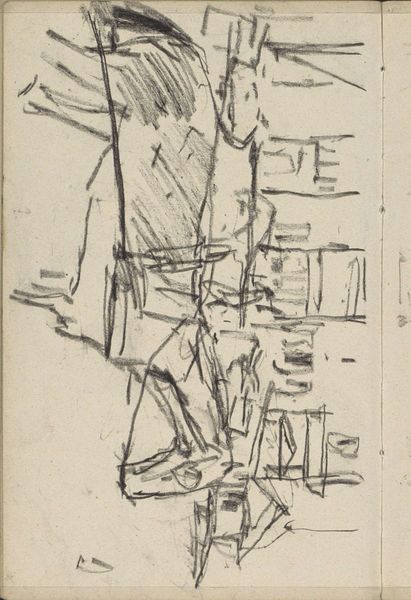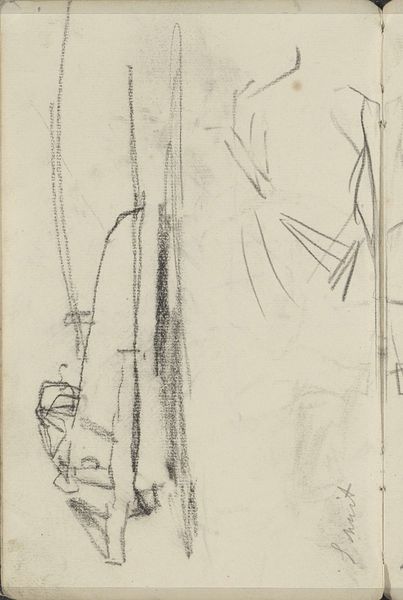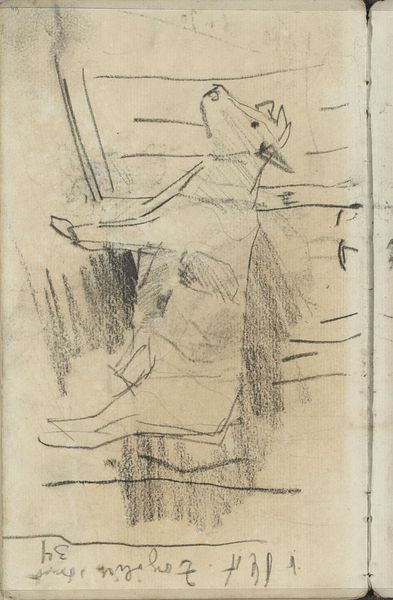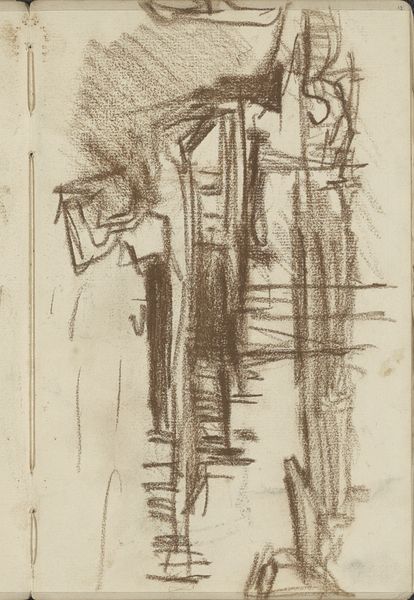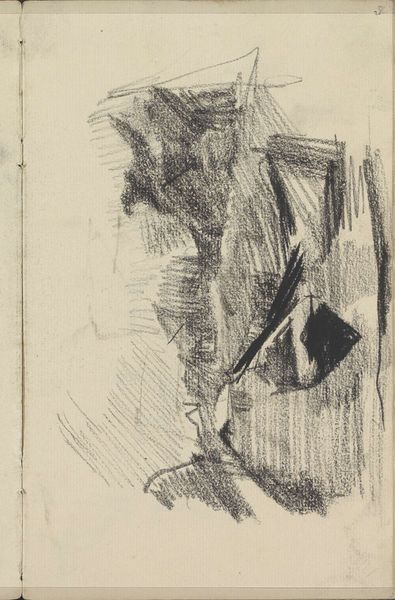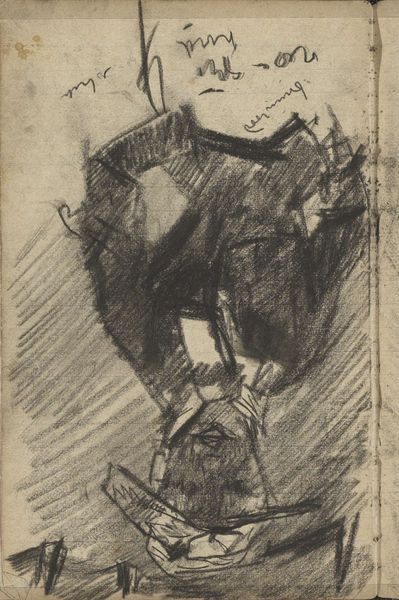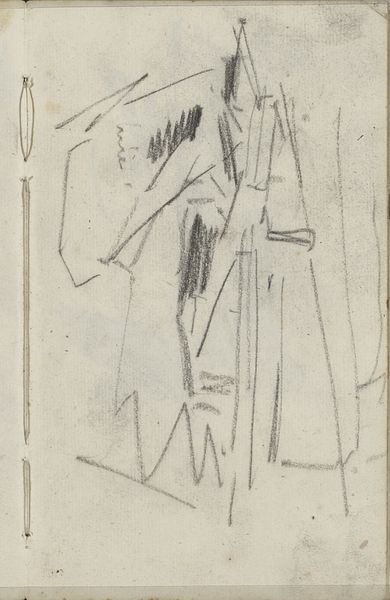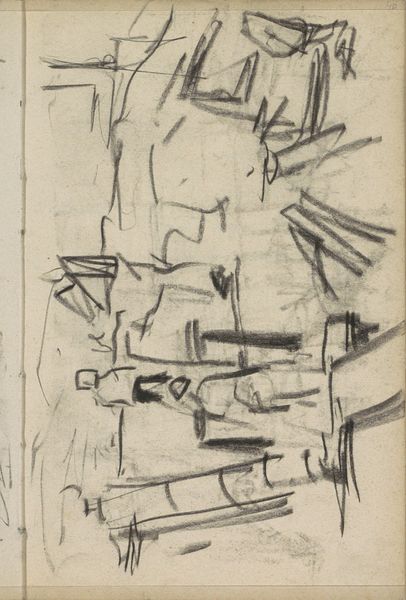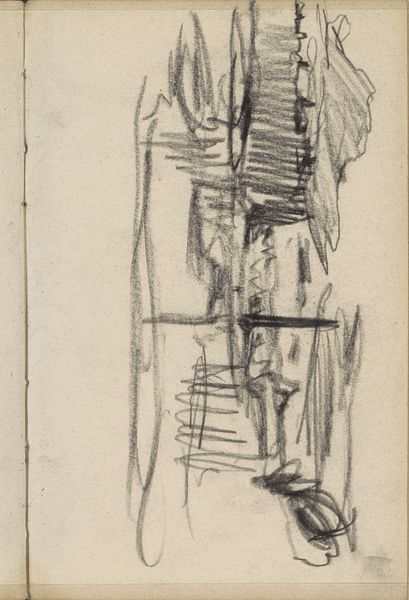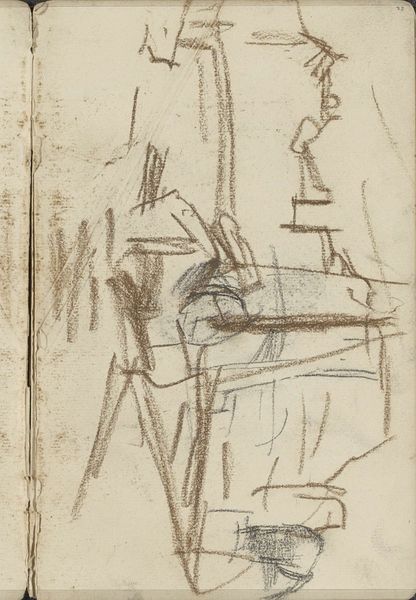
Copyright: Rijks Museum: Open Domain
Curator: Welcome! Here we have "Figuren voor een poort," or "Figures for a Gate," a sketch by George Hendrik Breitner, created in 1893. Editor: Immediately I get the impression this is more about the *process* of observing than a finished piece. Raw energy, wouldn't you say? A quick grasping at form. Curator: Precisely. It's made with charcoal and pen and ink—look how Breitner uses varied pressure to give weight to certain lines. It emphasizes the materiality of sketching. This wasn’t about refined presentation; it’s work, it's almost like notes from a factory floor. Editor: Yes! It’s almost like a stage set in preparation—or maybe the skeleton of a dream I can't quite remember. Very dreamlike indeed! The bold strokes contrasting with those tiny numbers suggesting calendar dates... there's a playfulness here, juxtaposing rigid time with fleeting ideas. Curator: Note how these kinds of sketchbooks functioned as idea generators for Breitner. Consider, for instance, how he integrated text into visual experimentation, documenting figures and architectural forms he could later manipulate and replicate within his oil paintings, or in different commercial work for magazine, posters and so on. Editor: You can sense him trying to understand weight, and presence, with minimal means, searching with his hand. The gate almost fades. As I was observing, it reminded me of Cy Twombly or late Goya, something about that loose gesture which captures the intangible, something felt instead of seen. Curator: Good connections. And consider the economic aspect. A quick charcoal sketch requires less capital output than a major history painting. Breitner here employs his means efficiently, capturing a thought for later retrieval at minimum expenditure, just another raw material to be stockpiled alongside canvases, paints, and models' time. Editor: True! It is amazing to feel connected to those brief, concentrated moments of the artist trying to grab the thing. It does give us an unvarnished look into Breitner's way of observing and processing his world. Curator: Right. By seeing the stages, the preparation behind such sketches we are afforded the ability to connect the material process to the art piece, adding nuance in our appreciation. Editor: Precisely! It’s like having a conversation across time, witnessing art in the making.
Comments
No comments
Be the first to comment and join the conversation on the ultimate creative platform.
